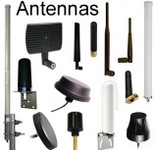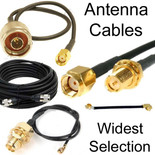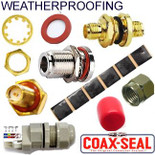Technical Support for Antennas & Related Gear
LTE-M - Low Power Wide Area Network (LPWAN) for IoT
LTE-M for IoT
LTE-M also known as Long Term Evolution for Machines, LTE-Machine Type Communication or eMTC is a form of Low Power Wide Area Network (LPWAN) developed by 3GPP to support a variety of IoT technologies.
It enables these devices to connect readily and directly to 4G networks without a gateway or the requirement of batteries. LTE-M is also favored because it can transfer large amounts of data including voice, with relatively low bandwidth and energy consumption meaning battery life of devices is prolonged.
LTE-M harnesses the cellular network infrastructure and is supported by key industry stakeholders. This network can co-exist with live 4G, 3G and 2G networks and takes advantage of the superior security and privacy of cellular networks. It is ideal for M2M or IoT applications where there is no opportunity to utilize WiFi, Ethernet or a landline connection as it can utilize cellular networks. Global commercial launches of LTE-M started in 2017 with deployments ongoing.
Its direct competitor NB-IoT was also launched in 2017 and is similarly positioned as an optimal network for IoT or Machine to Machine (M2M) communication. Both networks utilize only a single antenna. LTE-M has a North American focus while NB-IoT is currently being implemented in Europe.
Advantages of LTE-M over NB-IoT
- High data rates exceed NB-IoT with an upload peak rate of 5Mbps and download peak rate of 10Mbps.
- Latency of milliseconds compared to seconds with NB-IoT.
- Mobility, with in-vehicle hand-over permits LTE-M1 data transfer while mobile without dropping the connection just like a cell phone.
- Supports voice over network via VoLTE, meaning that applications requiring human interaction via voice can be supported.
Disadvantages of LTE-M versus NB-IoT
- Greater bandwidth consumption LTE-M1 with a bandwidth of 1.08MHz eclipses the 180kHz frequency of NB-IoT.
- Increased cost NB-IoT has lower costs which are still falling when compared with than other radio technologies including LTE-M1.
At present LTE-M cannot be deployed within LTE guard bands. Guard bands are narrow frequency ranges used to separate two ranges of wider frequency, preventing interference if the two main RF channels are in use.
LTE-M Applications
LTE-M is commercially recognized as a solution for secure communication with low power usage and moderate throughput of data. Examples of uses include:
- Home security
- Smart meters - scheduled ‘self-reporting’ of energy consumption by household meters.
- Industrial controls – feedback control via connected sensors and actuators.
- Agriculture - monitoring crops with feedback from designated sensors.








